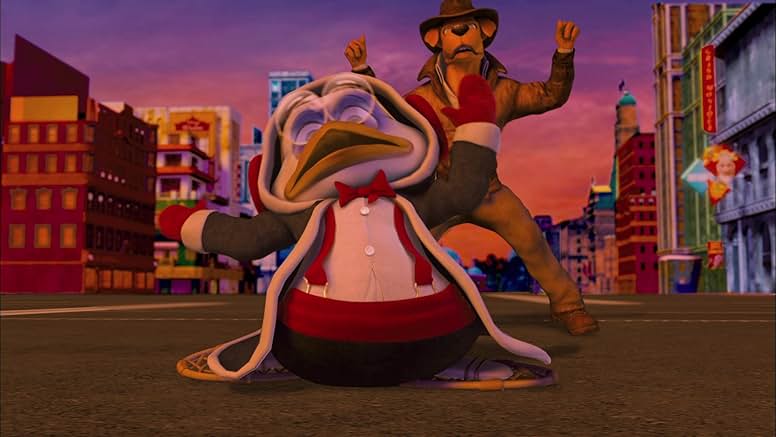When Lawrence Kasanoff made plans in 1999 to direct an animated movie, his goal was to make his company, Threshold Entertainment, “the next Pixar.” The film, Foodfight! assembled a star-studded cast and was planned for a December 2003 release.
However, production issues — including the theft of computer drives containing the film’s files — delayed its release until 2012. Since its debut, the movie has received an 11 per cent audience score on Rotten Tomatoes. Despite a US$32 million budget, it earned just US$120,000 at the box office, marking it a flop. Foodfight! takes place in a supermarket that transforms into a vibrant city at night, populated by brand icons — “Ikes” — representing their respective products. The protagonist, Dex Dogtective (voiced by an unenthusiastic Charlie Sheen), is a cereal mascot and detective. He quits his detective work after the disappearance of his love interest, raisin mascot Sunshine Goodness (voiced by Hilary Duff). Six months later, more mascots vanish following the arrival of Lady X (voiced by Eva Longoria), a femme fatale and the mascot for Brand X, an evil “no-name” brand. Brand X replaces the products of the missing Ikes, prompting Dex to don his detective hat once again.
The first thing that stands out about Foodfight! is its poor animation. Most of the characters have only one or two facial expressions. Even when Lady X is taking multiple punches to the face, her expression remains unchanged. What the characters lack in facial expressions, however, they make up for in bodily movement. Characters constantly flail their arms or spin unnecessarily, even during simple conversations. The final third of the movie even includes a nearly 10-minute section that almost solely consists of badly animated food and condiments being thrown and exploding.
Even with proper animation, the film’s poorly written script would have doomed it. Much of the dialogue includes puns like, “you cold-farted itch” and “frankly, my dear, I don’t give a spam.” The script also includes numerous sexual innuendos, like, “are those melons real?” (referring to actual watermelons) and “I wanna scrub your bubbles, Dex,” and far too many fart jokes to count.
The film has also faced criticism for heavy product placement. Real-life brand mascots such as Mr. Clean and Charlie the Tuna make cameos, with several taking centre stage in promotional materials. Gary Ruskin, executive director of Commercial Alert, said, “if you want your kids to nag you and throw tantrums for products, this is the movie for you.”
Despite Foodfight!’s financial failure and poor reception, it has sparked interest over the years. The film’s poor box office performance and perceived lack of quality have made it popular for YouTube reaction videos, with reviews of the movie being posted on the website as recently as 2024.
Thus, there seems to be an audience for films that are perceived to be poor quality. The 2003 drama The Room is considered one of the worst films ever made yet has a cult following to this day. Popular YouTubers such as Alex Meyers and the Nostalgia Critic have made their entire brands off of reacting to polarizing or critically panned media. So, what makes these “bad” films appealing?
It should be noted that movies that are intentionally “bad” do not seem to have the same appeal. The appeal seems to come from the experience of knowing that the movie was intended to be good. This can lead audiences to wonder how the creators thought their work would be well-received. Watching such films often becomes a bonding experience, especially when shared with others. For instance, I watched Foodfight! with my sister. While neither of us enjoyed the film, we enjoyed discussing it and trying to make sense of it together. There can be bonding in experiences, both pleasant and unpleasant.
Although I cannot call Foodfight! a “good” movie, I enjoyed piecing together how it came to be. It is fascinating to think that a film intended to rival major animation studios ended up as a cult curiosity. While it did not achieve Kasanoff’s vision, people are still talking about it over a decade later. In that sense, can it truly be called a failure?


